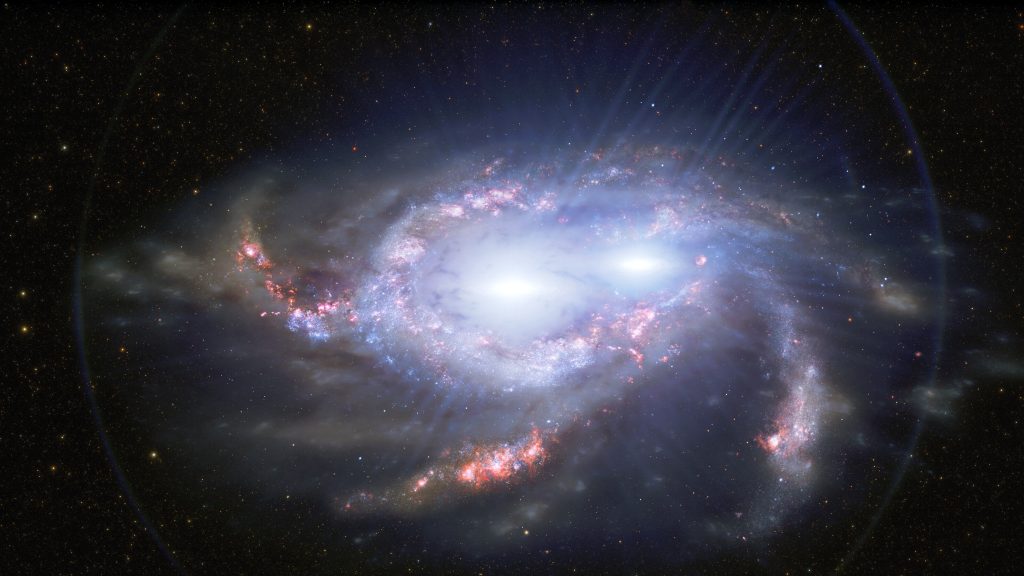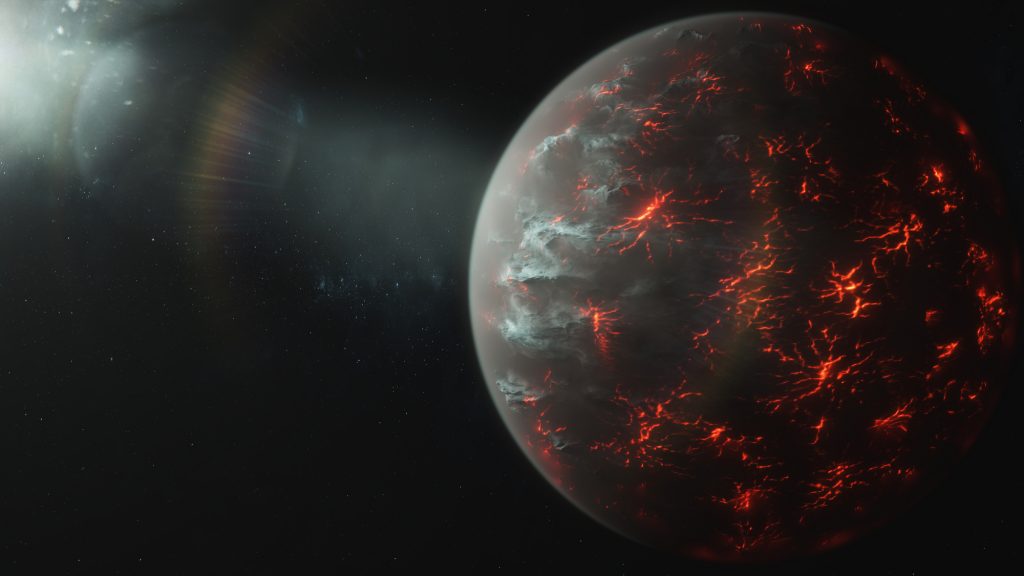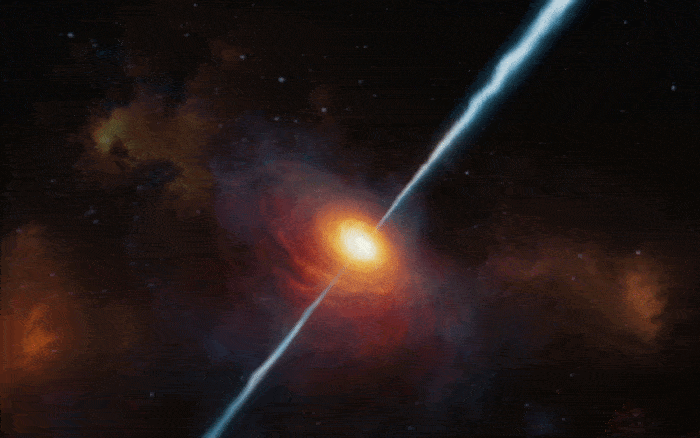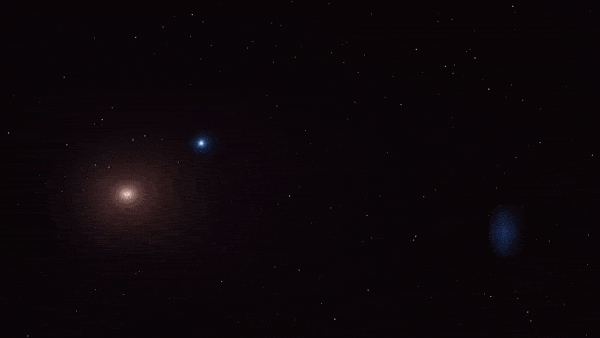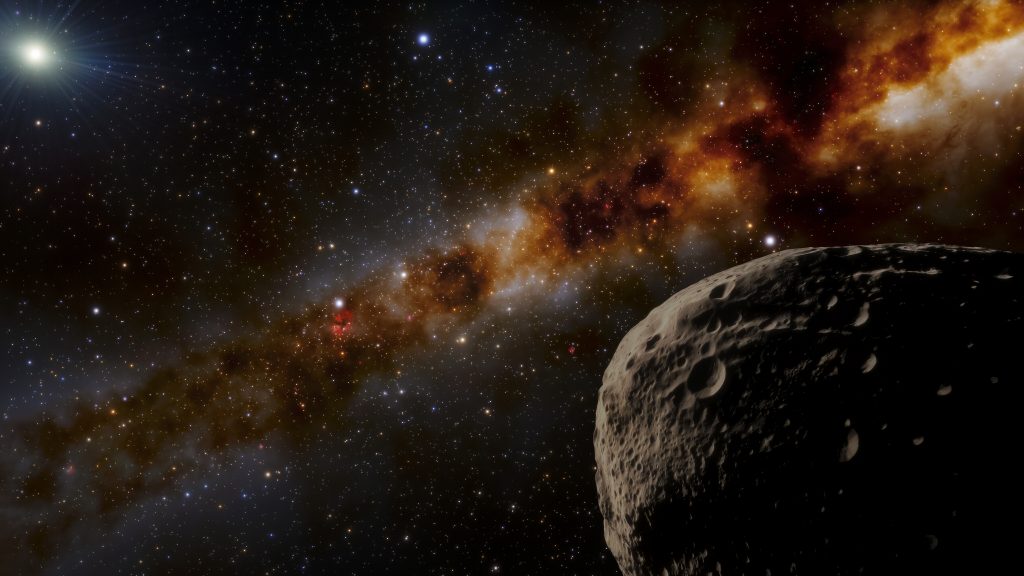Space
Basic structure of the cosmos pictured for the first time
Stars group together to form galaxies. Galaxies form galaxy clusters. These form superclusters, between which vast, largely empty regions extend, the voids. All superclusters are connected by a honeycomb-like basic structure, the "cosmic web", which consists of filamentary gas structures of hydrogen. That these filaments must exist has been known for some time. On the one hand, they are known from simulations based on theories of the structure of the universe, which predict such a basic structure. On the other hand, they become visible when energetic quasars illuminate them like car headlights illuminating the nebula. However, the regions thus…
What a volcano would look like on a metal world
On Earth it rains water, on Titan liquid methane comes from the sky. On some planets it rains iron or even diamonds. Such differences also exist in volcanology. On Ceres, researchers have discovered ice volcanoes, while terrestrial volcanoes spew cinders of liquid rock. On the asteroid Psyche, which consists primarily of metal, there may once have been iron volcanoes. Perhaps elsewhere, too. But what would such volcanoes look like? Knowing that is important for detecting them on distant celestial bodies. A team of researchers led by Arianna Soldati of North Carolina State University has studied this in a very…
Quasar transmits from the early days of the universe
In the 1950s, astronomers discovered radio sources to which point-like, i.e. star-like objects could be assigned in the visible light range. Until then, whole galaxies had been identified as radio sources. The findings were called "quasi-stellar objects", or quasars for short. Later, however, researchers realized that quasars are embedded in galaxies after all, and in fact constitute their active nuclei radiating in many wavelength ranges. That they had been seen only as point sources was simply because they are very, very distant. In fact, they are the most distant objects in the universe that we can observe. This is…
Super Venus in our cosmic neighborhood
Wolf 437, also called Gliese 486, is a red dwarf fairly close to the Sun - just 26 light-years away. What makes it interesting is a planet that astronomers now present in Science. Gliese 486 b moves around its parent star in a circular orbit within 1.5 days and at a distance of only 2.5 million kilometers (Earth: 150 million kilometers). Since its rotation around its own axis always takes the same time, the planet always turns the same side to its sun - similar to the moon to the earth. Although the star Gliese 486 is much fainter and…
When a star rips apart …
... a muon deep under the ice of Antarctica creates a trace in a gigantic detector. The muon was created because a high-energy neutrino interacted with an atom in the detector. The neutrino began its journey about 700 million years ago, around the time the first animals evolved on Earth. That's the travel time it took for the particle to get from the distant, unnamed galaxy (cataloged as 2MASX J20570298+1412165) in the constellation of The Dolphin to Earth. It occurred as a result of "AT2019dsg." This is what astronomers call an event in which a star was ripped apart…
Far far out is farther out than far out
It is like it is. Astronomers have now confirmed it: Dwarf planet candidate "Farfarout" really is farther away than its buddy "Farout". Farfarout was first spotted in January 2018 by the Subaru telescope on Maunakea in Hawai'i. Its discoverers could tell it was very far away, but they weren't sure exactly how far. They needed more observations. "At that point, we didn't know the orbit of the object because we only had the Subaru discovery observations over 24 hours, but it takes years of observations to get the orbit of an object around the Sun," explained co-discoverer Scott Sheppard of…
Three couples in a rare star dance
It must be quite interesting to live in the star system TYC 7037-89-1. Imagine a Galileo Galilei who has to explain this to his church highers: "Gentlemen, the earth moves around the sun while the sun moves around another sun. Just as two other stars orbit each other, with which we in turn orbit the center of mass with a third pair." But that probably still would have been the simpler option, because the three pairs of stars astronomers found using NASA's TESS satellite telescope orbit each other in very close orbits of 1.3, 1.6 and 8.2 days. A…
